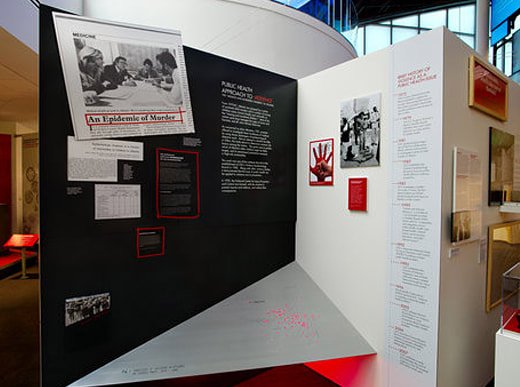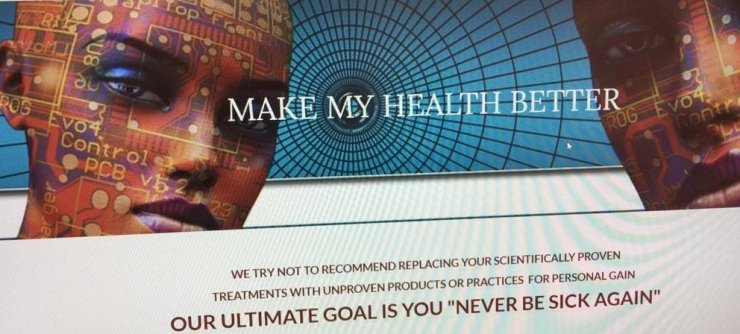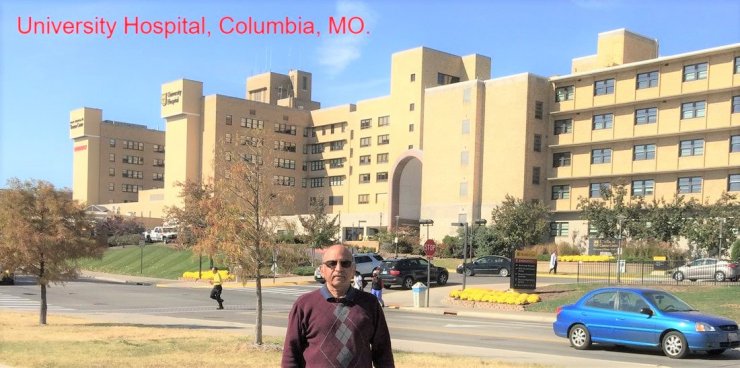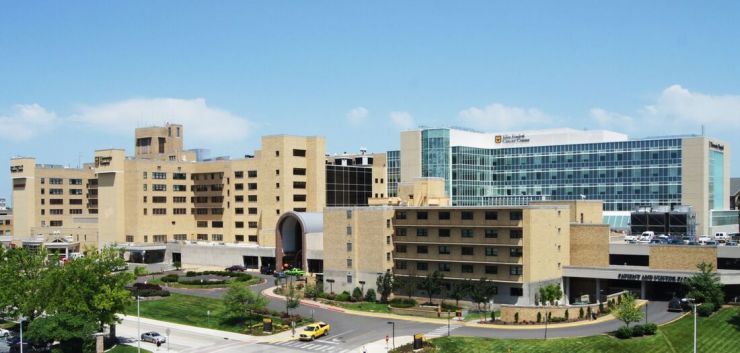8/25/2020
Stroke Recovery Timeline
By John Hopkins
Reviewed By:
April Pruski, M.D.
A stroke is an emergency situation, and the faster you receive treatment the better. But what happens in the days, weeks and months after a stroke? Johns Hopkins stroke rehabilitation specialist April Pruski, M.D., explains that “at times, the process can be slow and uncertain, and different people recover in a range of ways.”
Although recovery looks different for everyone, it can be helpful to get a sense of the stroke recovery timeline so you know what to expect after you or a loved one experiences a stroke.
Strokes aren’t always easy to recognize. Look out for these signs.
Day 1: Initial Treatment
If you experience a stroke, you will likely be initially admitted to an emergency department to stabilize your condition and determine the type of stroke. If it is caused by a blood clot (ischemic stroke), clot-busting medication can help reduce long-term effects if you are treated in time.
Depending on the stroke’s severity, you may need to spend time in intensive care or acute care.
“Starting rehabilitation as soon as possible after the cause of the stroke is treated is vital in stroke recovery,” says Pruski. “At Johns Hopkins, rehabilitation starts around 24 hours after a stroke.”
The rehabilitation team includes physiatrists, neurologists, physical and occupational therapists, speech-language pathologists and nurses. They meet daily to discuss the patient’s condition, and some form of therapy is delivered as often as every hour during the first day or two.
First Few Weeks After a Stroke
The typical length of a hospital stay after a stroke is five to seven days. During this time, the stroke care team will evaluate the effects of the stroke, which will determine the rehabilitation plan.
The long-term effects of stroke — which vary from person to person, depending on the stroke’s severity and the area of the brain affected — may include:
- Cognitive symptoms like memory problems and trouble speaking
- Physical symptoms such as weakness, paralysis and difficulty swallowing
- Emotional symptoms like depression and impulsivity
- Heavy fatigue and trouble sleeping
Physical and occupational therapy can help determine which areas of the brain are affected by working with a patient to complete various tasks, like walking or brushing hair. Speech-language therapy is important for patients who have trouble swallowing due to stroke or aftereffects of having a breathing tube.
Therapy sessions are conducted up to six times each day while the patient is at the hospital, which helps evaluate the damage caused by the stroke and jump-start the recovery.
Stroke Rehabilitation Priorities
Activities of daily living (ADL) become the focus of rehabilitation after a stroke. ADL typically include tasks like bathing or preparing food. But you should also talk with your care team about activities important to you, such as performing a work-related skill or a hobby, to help set your recovery goals. While therapy is vital, it is equally important to practice on your own.
Beyond affecting ADL, a stroke can have serious cognitive and emotional impacts for both patients and caregivers. Rehabilitation psychologists and neuropsychologists can screen for these kinds of challenges and create a plan to improve cognitive function and develop resilience in the face of what could be permanent lifestyle changes.
Leaving the Hospital After a StrokeYour care team will formulate a discharge plan that will depend on your level of functional impairment. After the hospital stay, you might continue your rehabilitation:
- In an inpatient rehabilitation unit or independent rehabilitation facility, if you can benefit from being monitored by a physician and can tolerate three hours of therapy per day
- At a subacute rehabilitation facility, if you require a slower course of rehabilitation with one to two hours of therapy daily
- At home with visits to an outpatient rehabilitation clinic as needed
“You don’t have to be at 100% health to return home after a stroke,” says Pruski. “If you can perform most of your regular daily activities in your home environment and/or you have family support to assist with these activities, you can go home.”
1–3 Months Post-Stroke
“The first three months after a stroke are the most important for recovery and when patients will see the most improvement,” says Pruski. During this time, most patients will enter and complete an inpatient rehabilitation program, or make progress in their outpatient therapy sessions.
The goal of rehabilitation is to restore function as close as possible to prestroke levels or develop compensation strategies to work around a functional impairment. An example of a compensation strategy is learning to hold a toothpaste tube so the strong hand can unscrew the cap.
Spontaneous Recovery
During the first three months after a stroke, a patient might experience a phenomenon called spontaneous recovery — a skill or ability that seemed lost to the stroke returns suddenly as the brain finds new ways to perform tasks.
Anticipating Setbacks
Some patients will experience setbacks in the months after a stroke, like pneumonia, a heart attack or a second stroke. These challenges can have significant effects physically, mentally and emotionally, and rehabilitation might need to be put on hold. It is important to work with your care team to adjust rehabilitation goals when there are setbacks.
Exploring New Treatments
While physical, occupational and speech therapies remain the key components of stroke rehabilitation, researchers are always coming up with new ways to enhance or supplement these treatments. One innovative technique is noninvasive brain stimulation (NIBS), which uses weak electrical currents to stimulate areas of the brain associated with specific tasks like movement or speech. This stimulation can help boost the effects of therapy.
TREATMENT
Noninvasive Brain Stimulation
Noninvasive brain stimulation (NIBS) is an innovative approach to stroke recovery. This safe and painless therapy can make rehabilitation efforts more effective, meaning better long-term outcomes for patients.
Learn more about noninvasive brain stimulation
The 6-Month Mark and Beyond
After six months, improvements are possible but will be much slower. Most stroke patients reach a relatively steady state at this point. For some, this means a full recovery. Others will have ongoing impairments, also called chronic stroke disease. Whether a full recovery is possible depends on a variety of factors, including severity of the stroke, how fast the initial treatment was provided, and the type and intensity of rehabilitation.
Even though recovery does slow down, it is still crucial to continue following up with members of your care team, including:
- Your primary care physician, who can help you manage any health concerns aside from stroke recovery, as well as take steps to prevent future strokes
- A rehabilitation physician (physiatrist), who can help coordinate aspects of your recovery and keep meeting with you as long as you need the support, whether it’s for a few years or the rest of your life
- Physical, occupational and speech therapists, who can help you recover as much function as possible in day-to-day activities, with a focus on your personal goals
- A neurologist, who understands the mechanisms behind stroke-related brain injury and can suggest customized treatments to target the affected area of the brain
- A rehabilitation psychologist, who can help with cognitive, emotional and behavioral functioning as well as reintegrating with the community, which can aid in recovery
“During checkups, I look to support patients any way I can,” says Pruski, a physiatrist. “If there’s any way I can help them maximize their ability to communicate, return to work, improve sleep patterns, build muscle tone, minimize fall risk or address psychological needs, we’ll create a plan.”
A coordinated effort among specialists can facilitate further progress months and years down the line. While improvement may take longer for some patients, there’s still hope for small advances. “I think it’s important to paint a picture of hope in stroke,” Pruski says. “Every time you need less assistance with a task, that is a milestone for the patient.”
Be FAST to Identify a Stroke
A stroke is always an emergency situation. An easy way to quickly identify stroke symptoms is the acronym FAST:
F — Face. If the person tries to smile, does one side, or do both sides, droop?
A — Arms. Can both arms be raised evenly, or does one drift downward?
S — Speech. Is the person having trouble speaking, or are they slurring their words?
T — Time to call 911. Call emergency services if you notice one
8/24/2020
Stroke recovery steps
Stroke is a life-changing event. How long it takes you to recover depends on many factors, including the type of stroke you had, the area of your brain affected, and the amount of brain injury. The recovery process begins at the hospital as soon as you are medically stable. Often, this is within a day of having the stroke. Your doctor will talk to you about next steps. This will involve changes in your everyday habits, medicines, rehabilitation, or surgeries to lower the risk of another stroke.
Step 1. Educate yourself about stroke recovery.
The first step is to learn all you can about your condition and what to expect during recovery.
Ask your doctor, nurses, or physical or occupational therapist questions about your treatment and rehabilitation. Other stroke survivors can also help with practical tips. You can use the stroke resources on this website.
Step 2. Take steps to prevent another stroke.
If you've had a stroke, you're at high risk of having another. As you recover from your stroke, take steps to prevent a second one:
- Identify and control your stroke risk factors.
- Continue with your treatment plan. After a stroke, your doctor will work with you on a treatment plan. Your plan is designed to help you recover from your stroke and prevent another stroke. Even if you feel better, do not stop taking a medicine without talking to your doctor first.
Step 3. Figure out what rehabilitation services you will need.
Stroke rehabilitation is a program to help you recover from stroke. Almost all stroke survivors benefit from rehabilitation. However, many women do not join a rehabilitation program for reasons that are not clear. Many women are older at the time of their stroke and often go to assisted-living facilities or hospice after a stroke rather than to a rehabilitation program.1
Most insurance plans must cover stroke rehabilitation, although you may need to pay a copayment, coinsurance, and meet your deductible first. Find out what your insurance will cover, and what benefits you can receive from government programs or from your employer.
After a stroke, you will often recover some function in the first few months. This is part of the body's natural healing process. Women who get stroke rehabilitation:
- Relearn skills and abilities that were damaged or lost
- Regain as much independence as possible
- Learn to cope with any remaining limitations
Also, think about what, if anything, you will need from caregivers at home and what they are able to provide. Who is available to help with your care? How much time can they spend taking care of you? Can they provide financial support?
Step 4. Set goals for your recovery.
Set realistic, measureable goals for recovery in each area of your life your stroke affected. Keep in mind that stroke recovery is usually fast in the first few months. Then it may slow down. Having goals will help to motivate you to keep making progress.
Write down your long-term goals and create a timeline for achieving them. Break each one down into steps to make short-term goals.
Step 5. Follow through on your plan.
A stroke can often make you feel powerless. Part of recovery is figuring out how to live as independently as possible. Know that you are likely to face challenges as you adjust to the differences in how your body works.
The road to stroke recovery is often a long one, but focusing on your progress can help you reach your goals.
Did we answer your question about recovering from stroke?
For more information about recovering from stroke, call the OWH Helpline at 1-800-994-9662 or check out the following resources from other organizations:
- Find a Certified Stroke Center or Rehabilitation Facility — Directories of stroke and rehabilitation centers from the National Stroke Association
- Find a Neurologist — American Academy of Neurologists directory
Sources
- Petrea, R. E., Beiser, A. S., Seshadri, S., Kelly-Hayes, M., Kase, C. S., & Wolf, P. A. (2009). Gender differences in stroke incidence and post-stroke disability in the Framingham Heart Study. Stroke, 40(4), 1032–1037.
This content is provided by the Office on Women's Health.
Syndicated Content Details:
Source URL: https://www.womenshealth.gov/heart-disease-and-stroke/stroke/stroke-treatment-and-recovery/stroke-recovery-steps
Source Agency: Office on Women's Health (OWH)
Captured Date: 2018-04-28 00:07:00.0
Life expectancy reduced by stroke, diabetes and heart attack combo
Life expectancy reduced by stroke, diabetes and heart attack combo
Consequences and recovery after a second stroke
Consequences and recovery after a second stroke
Costs & Consequences | Million Hearts
Tracking down the salt in food with Professor Saul T.
Million Hearts® Targets
Million Hearts: Working Together to Prevent One Million Heart Attacks and Strokes
Data & Reports | Million Hearts
Learn & Prevent | Million Hearts
Million Hearts® e-Updates
Stroke Information
Heart Disease and Stroke Death Rates, Ages 35+, 2013-2015
CDC Addresses Stroke
Stroke Resources for Health Professionals
Stroke Awareness
Preventing Stroke Deaths
Preventing stroke deaths
Knowing Your Risk for High Cholesterol
Types of Stroke
Stroke Signs and Symptoms
Family History & Your Risk for Stroke
Stroke Facts
About Stroke
Conditions That Increase Risk for Stroke
Recovering From Stroke
5 Surprising Facts About High Blood Pressure
State Public Health Actions Funding Map'DHDSP'CDC
Know the Facts About Stroke
Cerebrovascular Disease or Stroke
Flu and Heart Disease & Stroke
A twist on gift-giving this season could change hearts
Preventing A Million Heart Attacks and Strokes: A TurningPoint for Impact | Public Health Grand Rounds
The Obesity Epidemic (7:13) | Video
Data | Million Hearts
Tools & Protocols | Million Hearts
Videos | Million Hearts
Risks for Heart Disease and Stroke
Prevention | Million Hearts
Healthy Is Strong





Author
Write something about yourself. No need to be fancy, just an overview.
Original ellagic acid research* from black walnut in 1968 showed many pharmacological effects in small animals such as anti-tumor, brain-protecting effect, analgesic, and tranquilizer like properties, antibacterial, anti-histaminic or anti-inflammatory effects, along with blood pressure-lowering action. Some of the experiments were so powerful that Ellagic acid prevented death almost 100% in mice from electroconvulsive shock and death from the acute release of histamine by strong histamine liberators similar to the prevention of mortality by acute anaphylactic like a shock.
Polyphenols are micronutrients with anti-prolific and antioxidant properties that can prevent prostate cancer, diabetes, and cardiovascular diseases. These health benefits were first discovered during the period 1977 - 1990 after the original ellagic acid (EA) research results were known as shown above. During this time, EA also became very popular on the internet as an anticancer compound. EA is found in many fruits, nuts, and vegetables, therefore easy to consume in vegan or vegetarian diets. Currently, there are more than 4000 publications & patents on ellagic acid supporting the above health benefits.
